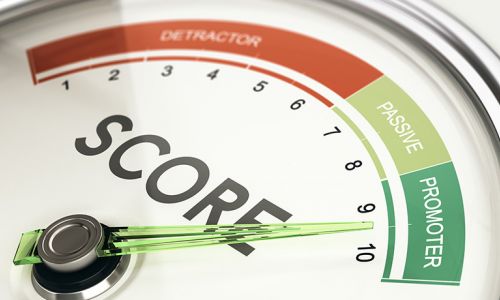No matter what your business is, I can absolutely guarantee an increase to your average customer retention rate. If customer loyalty is all you care about, I know a 100% surefire method to improve it, no matter how good or how bad your product or service is, and no matter how many customers you have today.
The secret? Stop acquiring new customers. Quit bringing on any new customers and it’s a mathematical certainty that your average customer retention rate will increase.
The reason is very simple. In any given population of customers, different customers will always have different likelihoods of remaining loyal. Some are more prone to defection than others, and they’re more likely to leave first. So your remaining customers, on average, will consist more and more of those who were less likely to leave. Almost by definition, your newest customers will be less loyal, on average, than those customers who have already been with you for a longer period.
Of course, this foolproof method is not really a sound business strategy, either. Obviously, over time your business will die if you don’t recruit any new customers. No business can remain healthy without new customers.
I’m simply trying to illustrate the importance of thinking about your business in a balanced way. Just as customer acquisition should never be your sole objective, neither should customer loyalty. The next time you hear someone brag that their average customer loyalty has increased, be sure to ask them whether customer acquisitions increased or decreased during the same period. And if they don’t know the answer to that question, then they don’t really know what happened to “average” customer loyalty at all, do they?
In fact, the only genuinely valid way to talk about customer loyalty, as a percentage rate metric, is to discuss it as a percent of all customers in a particular “vintage” (customers acquired in Year 1, Year 2, Year 3, etc), or in a specific “cohort” (customers acquired in Campaign A, Campaign B, Initiative C, etc.).
But there’s another lesson here as well. Whatever your customer acquisition strategy is, it’s very important to take into account the simple fact that some customers are, simply by nature, more loyal than others. You might find it possible to craft a sales proposition that appeals specifically to those types of customers. This was the strategy Lexus pursued in its early days, and the result is that Lexus continues to have one of the highest customer loyalty rates in the automotive category.
So here are a few additional ideas:
• Design your sales incentives to reflect more than one-size-fits-all customer acquisition. You might consider paying a higher commission for certain types of customers than others, or perhaps providing a salesperson with a continuing revenue stream for ongoing business. Sticking with the automotive space, for instance, imagine how a car dealership might operate if it paid salespeople commissions not just on the initial sale of a car to a new customer, but also a small percentage of whatever additional business the customer generates over the next several years (including service visits, other cars purchased, referrals, etc.).
• In the B2B space, focus hard on acquiring “good” customers, as opposed to other types of customers. You should try to zero in on the kinds of customers more likely to want suppliers capable of adding value, rather than simply slashing costs to the bare minimum.
• Put a value proposition together that is more appealing to the most knowledgeable customers. These are the customers more likely to have high word-of-mouth influence with others.
• Offer customers the opportunity to help other customers with any service or usage issues, as a way to gain value from the goodwill of your more loyal customers.
• Renounce the short-termism that forces you to focus exclusively on immediate, easily measurable numbers such as sales and costs and loyalty rates in the first place. Instead, balance any current-period metrics with measurements designed to capture long-term value creation, as well.






